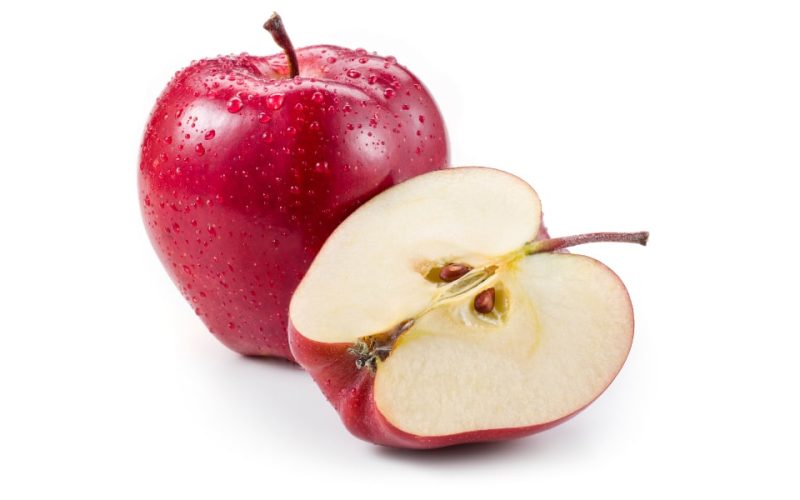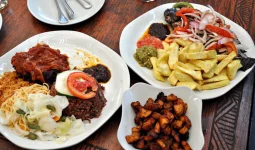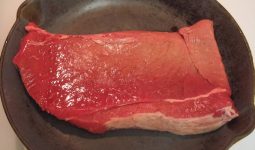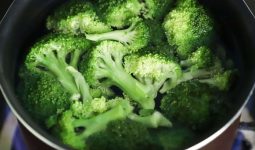The saying that you are what you eat is nothing far from the truth. Digestive issues are very common these days and the major reason why people have them is the food they feed on and this brings us to the discussion of FODMAPs.
Introduction to FODMAPs?
FODMAPS are a type of carbohydrate found in some particular kinds of foods like beans and wheat. Research has been able to draw links between FODMAPs and digestive symptoms such as stomach pain, bloating, diarrhea, gas, and constipation.
Individuals with common digestive disorders can enjoy remarkable benefits from feeding on low-FODMAP diets. This article is a detailed beginners guide to help you know more about FODMAPs and how to feed on low-FODMAP diets.
What exactly are FODMAPs?
FODMAP is an acronym for fermentable oligo-, di-, mono-saccharides and polyols. These FODMAPs are short chained carbohydrates that are resistant to digestion.
Instead of these carbs to get absorbed into your bloodstream, they travel all the way to the far end of this intestine and that is where most of your gut bacteria lives.
When these carbs reach the end of your intestine and interact with your gut bacteria, these bacteria use the carbs as fuel to produce hydrogen has and and also cause digestive symptoms in individuals that are sensitive.
FODMAPs usually draw liquid into your intestine as well and that is what may lead to diarrhea. However, not every person is sensitive to FODMAPs, reactions like the above-mentioned are only common among individuals with irritable bowel syndrome.
Some common FODMAPs include:
- Lactose: this is the kind of carbs that exist in milk and other diary products.
- Fructose: this is a simple sugar that is found in many vegetables and fruits, and it also makes up the structure of most added sugars and table sugars.
- Fructans: this kind of carbs are found in many foods such as grains like barley, spelt, rye, and wheat.
- Polyols: Sugar alcohol such as maltitol, xylitol, mannitol, and sorbitol. They are often used as sweeteners and also found in some fruits and veggies.
What happens to you when you eat food high in FODMAPs?
The bulk of FODMAP carbs often pass through your entire intestine without changing. They are totally resistant to digestion and are categorized as dietry fibers.
Nevertheless, some carbohydrates function like FODMAPs in some individuals. This includes fructose and lactose. The general sensitivity to the above carbs also differs between individuals and scientific believe that these carbs contribute to digestive problems such as IBS.
When FODMAPs journey to your colon, they become fermented and get used up as fuel by the guts bacteria living in your intestine. The exact same thing is what occurs when you consume dietry fibers and your friendly gut bacteria feeds on them and you enjoy numerous health benefits as an end result.
The difference is that the good gut bacteria produces methane and the bad gut bacteria from FODMAPs produces hydrogen which is another type of gas which may lead to boating, pain, stomach cramps, and constipation.
Almost all of these symptoms are caused by distention of the gut and that can also make your stomach appear bigger. Because of his osmotically active FODMAPs are, they can easily draw water into your intestine and cause you to experience diarrhea.
What are the benefits of a low FODMAP diet?
The effect of low food map diets have been studied mostly in individuals with irritable bowel syndrome.
Irritable bowel syndrome is a digestive disorder that causes symptoms like bloating, gas, constipation, diarrhea, and stomach cramps. It is assumed that almost 14 per cent of the US population has LBS and most of them are undiagnosed.
Although the cause of irritable bowel syndrome is unknown, it is well known that a person’s diet can have a significant effect and stress can be a major contributor. About 75 per cent of people who have irritable bowel syndrome according to research, will greatly benefit from engaging in a low FODMAP diet.
In a lot of cases these people experience a massive reduction in symptoms and an impressive improvement in their quality of life.
There is also a chance that a loose FODMAP diet will be beneficial for alleviating some other functional gastrointestinal disorders (FGID). The FDIG is a term that is used to describe various other digestive problems.
Also there are evidences to prove that a low FODMAP diet can be of great use to people who have inflammatory bowel diseases such as ulcerative colitis and crohn’s diseases.
If you have noticed that you are intolerant, that the benefits you may enjoy from a low FODMAP diet includes less stomach pain, less gas, less diarrhea, less constipation, and less bloating.
You may also notice some positive physiological benefits as it is known that digestive disturbances can cause stress and also have links to some mental disorders like depression and anxiety in some cases.
Foods and ingredients that are high in FODMAP
here is a list of ingredients and foods that have high FODMAP content
- Fruits: Dates, apricots, apples, cherries, applesauce, blackberries, watermelon, pears, cherries, boysenberries, figs, canned fruits, and peaches.
- Sweeteners: high fructose corn syrup, fructose, honey, xylitol, sorbitol, maltitol.
- Diary products: Soft and fresh cheese, ice cream, sour cream, most yoghurts, cow milk, and whey protein supplement.
- Vegetables: Broccoli, garlic, onion, okra, beetroot, peas, leaks, shallots, cabbage, cauliflower, brussel sprouts, mushroom, artichokes, and asparagus.
- Legumes: baked beans, chick peas, lentils, soybeans, and red kidney beans.
- Wheat: crackers, bread, waffles, breakfast cereals, tortillas, pancakes, and biscuits.
- Beverages: Fortified wine, beer, Mike, fruit juice, soymilk, and soft drinks with high fructose corn starch.
- Other grains: Rye and barley
Foods you can eat when on a low FODMAP diet
It is important to know that the essence of a low FODMAP diet isn’t too eliminate FODMAP completely from the foods you eat as that is almost impossible. However, your ability to minimise FODMAP carbs will greatly improve your digestion and reduce digestive symptoms.
The food you can eat on a low FODMAP diet includes:
- Fish, meat, and eggs: these foods are highly tolerated except in cases where high FODMAP ingredients like high fructose corn syrup and wheat has been added.
- Nuts and seeds: Cashew nuts, almond nuts, peanuts, sesame seeds, Pine nuts, and macadamia nuts.
- Fruits: Blueberries, bananas, grapes, Kiwi, lime, grapefruit, lemon, oranges, raspberry, straw berry, melons but not watermelons, mandarins, and passion fruit.
- All fats and oils and most herbs and spices
- Sweetener: stevia and most sugar alcohols, molasses, and maple syrup.
- Diary products: hard cheeses and aged softer varieties like camembert and brie, lactose-free dairy products.
- Beverages: Coffee, water, tea e.t.c
- Vegetables: Sweet potatoes, tomatoes, squash, yams, eggplant, carrot, eggplant, cucumber, celery, Bell peppers, radish, spinach, green beans, Kale, lettuce, olive, spring onions, alfalfa, chives, bok choy, chestnuts, zucchini and turnips.
- Grains: Rice, oats, quinoa, tapioca, corn, and sorghum.
However, do note that there are many other foods that are neither high note low on FODMAP that didn’t make this list and also, our body systems very which means that some people might still react to some of the foods listed here.









